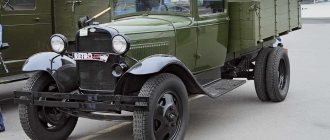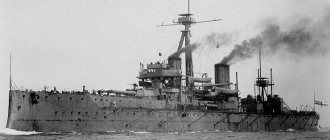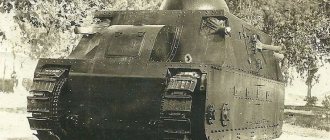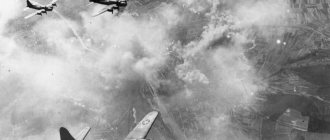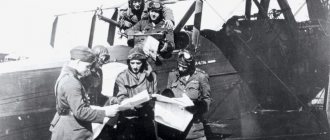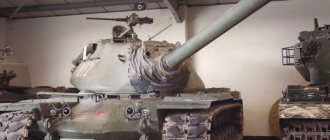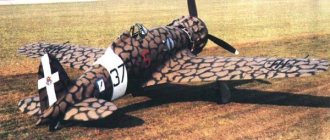Facts and slander. Italian fleet in World War II
“The only successful operation of the Italian General Staff,” B. Mussolini commented on his arrest. “The Italians are much better at building ships than they are at fighting on them.” An old British aphorism.
...The submarine Evangelista Torricelli was patrolling the Gulf of Aden when it encountered strong enemy opposition. Due to the damage received, we had to return on the surface. At the entrance to the Red Sea, the boat met the English sloop Shoreham, which urgently called for help.
“Torricelli” was the first to open fire with her only 120-mm gun, hitting the sloop with a second shell, which was forced to retreat and go to Aden for repairs.
Meanwhile, an Indian sloop approached the site of the ensuing battle, and then a division of British destroyers. Against the boat's only gun there were nineteen 120 mm and four 102 mm guns, plus many machine guns.
The boat's commander, Salvatore Pelosi, took over the battle. He fired all his torpedoes at the destroyers Kingston, Kandahar and Khartoum, while continuing to maneuver and conduct an artillery duel. The British dodged the torpedoes, but one of the shells hit Khartoum. Half an hour after the start of the battle, the boat received a shell in the stern, damaging the steering gear and wounding Pelosi.
After some time, the Evangelista Torricelli gun was destroyed by a direct hit. Having exhausted all possibilities for resistance, the commander ordered the ship to be scuttled. The survivors were taken aboard the destroyer Kandahar, with Pelosi receiving a military salute from British officers.
From aboard the Kandahar, the Italians watched as a fire broke out on the Khartoum. Then the ammunition detonated, and the destroyer sank to the bottom.
“Khartoum” (built in 1939, displacement 1690 tons) was considered the newest ship. The case of a submarine sinking a destroyer in an artillery battle has no analogues in maritime history. The British highly appreciated the valor of the Italian submariners. Commander Pelosi was received as senior naval officer in the Red Sea by Rear Admiral Murray.
In addition to the losses suffered by the British ships, the British fired 700 shells and five hundred machine gun magazines to sink one submarine. Torricelli went under water with her battle flag flying, which can only be raised in sight of the enemy. Captain 3rd Rank Salvatore Pelosi was awarded Italy's highest military award, the Medalia D'Or Al Valor Militari (Gold Medal for Military Valor).
The mentioned “Kandahar” did not ply the seas for long. In December 1941, the destroyer was blown up by mines near the Libyan coast. The light cruiser Neptune sank with him. Two other cruisers of the British strike force (“Aurora” and “Penelope”) were also blown up by mines, but were able to return to base.
The light cruisers Duca d'Aosta and Eugenio di Savoia are laying a minefield off the coast of Libya. In total, during the period of hostilities, warships of the Italian Navy deployed 54,457 mines on communications in the Mediterranean Sea
The descendants of the great Marco Polo fought all over the world. From the icy blue of Lake Ladoga to the warm latitudes of the Indian Ocean.
Two sunken battleships (“Valiant” and “Queen Elizabeth”) are the result of an attack by Decima MAS combat swimmers.
The sunken cruisers of His Majesty “York”, “Manchester”, “Neptune”, “Cairo”, “Calypso”, “Bonaventure”.
The first fell victim to sabotage (a boat with explosives). "Neptune" was blown up by mines. Manchester became the largest warship ever sunk by torpedo boats. Cairo, Calypso and Bonaventure were torpedoed by Italian submarines.
400,000 gross registered tons - this is the total “catch” of the ten best submariners of Regia Marina. In first place is the Italian “Marinesco”, Carlo Fecia di Cossato with a result of 16 victories. Another submarine warfare ace, Gianfranco Gazzana Prioroggia, sank 11 transports with a total displacement of 90 thousand gross tons.
The Italians fought in the Mediterranean and Black Seas, off the coast of China, and in the North and South Atlantic.
43,207 trips to sea. 11 million miles of combat travel.
According to official data, Regia Marina sailors provided escort for dozens of convoys that delivered 1.1 million military personnel and 60 thousand Italian and German trucks and tanks to North Africa, the Balkans and the Mediterranean islands. Precious oil was transported on the return route. Frequently, cargo and personnel were placed directly on the decks of warships.
And, of course, a golden page in the history of the Italian fleet. Tenth Assault Flotilla. The combat swimmers of the “black prince” Valerio Borghese are the world’s first naval special forces, which terrified their opponents.
The British joke about “Italians who don’t know how to fight” is true only from the point of view of the British themselves. It is obvious that the Italian Navy, both quantitatively and qualitatively, was inferior to the “sea wolves” of Foggy Albion. But this did not stop Italy from becoming one of the strongest naval powers and leaving its unique imprint in the history of naval battles.
Anyone familiar with this story will notice an obvious paradox. The bulk of the Italian Navy's victories came from small ships - submarines, torpedo boats, man-torpedoes. While large combat units did not achieve much success.
The paradox has several explanations.
Firstly, the cruisers and battleships of Italy can be counted on one hand.
Three new Littorio class battleships, four modernized World War I battleships, four Zara and Bolzano type TCRs, and a pair of first-born “Washingtonians” (“Trento”).
Of which, only the “Zary” and “Littorio” + a dozen light cruisers, the size of a destroyer leader, were really combat-ready.
However, even here there is no need to talk about the lack of success and complete uselessness.
None of the listed ships were at the pier. The battleship Vittorio Veneto completed 56 combat missions during the war years, covering 17,970 miles in battle. And this is in a limited “patch” of the Mediterranean theater of operations, in the presence of a constant threat from under water and from the air. Regularly falling under enemy attacks and receiving damage of varying degrees of severity (the battleship spent 199 days on repairs). Moreover, he still managed to live until the end of the war.
It is enough to trace the battle path of any of the Italian ships: each line there corresponds to some epic event or famous battle.
“Shot at Calabria”, the battle with the Espero convoy, the shootout at Spartivento, the battle at Gavdos and the battle at Cape Matapan, the first and second battles in the Gulf of Sidra... Salt, blood, sea foam, shooting, attacks, battle damage!
Name those who managed to take part in so many ups and downs of such a scale! The question is rhetorical and does not require an answer.
The Italians’ enemy was a “tough nut to crack.” Royal Navy of Great Britain. "White Ensign". It couldn't be cooler.
In fact, the enemy forces turned out to be approximately equal! The Italians managed without Tsushima. Most of the battles ended with an equal score.
The tragedy at Cape Matapan was caused by one single circumstance - the lack of radars on Italian ships. British battleships, invisible in the night, approached and shot three Italian cruisers at point-blank range.
This is such an irony of fate. In Gugliemo Marconi's homeland, not much attention was paid to radio technology.
Another example. In the 30s Italy held the world aviation speed record. That did not prevent the Italian air force from being the most backward air force among Western European countries. During the war the situation did not improve at all. Italy had neither a decent air force nor naval aviation.
So is it any wonder that the German Luftwaffe achieved greater success than the Italian sailors?
You can also remember the shame in Taranto, when low-speed “whatnots” disabled three battleships in one night. The blame lies entirely with the command of the Italian naval base, who were too lazy to install the anti-torpedo net.
But the Italians were not alone! Episodes of criminal negligence occurred throughout the war, both at sea and on land. The Americans have Pearl Harbor. Even the iron “Kriegsmarine” fell with its Aryan face into the dirt (the battle for Norway).
There were completely unpredictable cases. Blind luck. Record hit by “Warspite” in “Giulio Cesare” from a distance of 24 kilometers. Four battleships, seven minutes of fire - one hit! “The hit can be called a pure accident” (Admiral Cunnigham).
Well, the Italians were a little unlucky in that battle. Just like the British “Hood” was unlucky in the battle with the Bismarck LK. But this does not give grounds to consider the British unfit sailors!
As for the epigraph to this article, one can doubt its first part. The Italians know how to fight, but at some point they forgot how to build ships.
Not the worst on paper, the Italian Littorio became one of the worst ships in its class. Second from the bottom in the ranking of fast battleships, ahead of the obviously discounted King George V. Although even a British battleship with its shortcomings may outperform the Italian. There are no radars. Fire control systems at the level of World War II. The repurposed guns hit at random.
The first of the Italian “Washingtonians”, the cruiser “Trento” - a terrible end or horror without end?
The destroyer “Maestrale” became a series of Soviet destroyers of Project 7. Our fleet had enough trouble with them. Designed for “hothouse” Mediterranean conditions, the “sevens” simply fell apart in northern storms (the death of the destroyer “Crushing”). Not to mention the very flawed concept of “everything in exchange for speed.”
Zara-class heavy cruiser. They say the best of the “Washington cruisers.” How is it that the Italians, for once, have a normal ship?
The answer to the problem is simple. The “Makaroniniks” did not care at all about the cruising range of their ships, rightly believing that Italy was located in the center of the Mediterranean Sea. Which means all the bases are nearby. As a result, the cruising range of Italian ships of the selected class, compared to ships of other countries, was 3-5 times less! This is where the best security and other useful qualities come from.
In general, the Italians' ships were below average. But the Italians really knew how to fight with them.
Italian Navy
Italy is a country with a very rich history. The main success of centuries-old history is the Roman Empire. It was at that time that the country's first fleet appeared. However, it cannot be compared even with the ships of the Middle Ages. Basically, the ships of the Roman fleet had 2 types - combat and transport. The first type was narrow and long (1:6), the second were wider and round. Both types of ships were rowing ships (galleys). Moreover, warships had artillery weapons in the form of ship catapults.
The Roman Navy played a vital role in the victory of the House of Rome over Carthage.

